Equatorial Guinea
Equatorial Guinea is a country in Central Africa . It is made up of two parts, one continental, bordered by Cameroon and Gabon, the other insular with the island of Bioko (where the capital Malabo is located) and the island of Annobón.
Equatorial Guinea’s history
Prehistory The study of the Prehistory of Guinea follows a geographical subdivision, the island of Bioko on the one hand, the province of the Littoral between Cameroon and Gabon on the other hand. The island of Bioko was connected to the mainland until 8000 BC. AD by a “bridge” which was slowly submerged by the rising waters of the Atlantic, which had started around 11000 BC. AD at the end of the last Ice Age. As a result, it is likely that this territory was to be inhabited by nomadic hunter-gatherer populations, like what is known on the current continent. The remains of a human presence were discovered in an excavation at the Mossumu site (Littoral province) and dated to 30,000 BC. This is an industry known as “Sangoenne”, well known at that time across Central Africa. Some other sites, surface or in stratigraphic outcrop, indicate that the Middle Stone Age is well represented in this part of the country. Subsequently, vestiges, still poorly dated, illustrate around Bata and the Rio Muni the permanence of the presence of man, nomad, stonecutter and hunter-gatherer, until 3000 BC.
On the island of Bioko, this is another reading; this will most certainly be modified in the coming years with the installation of archaeological research projects. Three “pre-Neolithic” deposits have been identified. Only that of the Banapa seminary south of Malabo was excavated in the sixties by a Spanish anthropologist. All that can be said is that it predates the “Timbabé Tradition” of Bioko, still undated, itself prior to the “Tradition Carboneras” dated by the radiocarbon between the fifth and tenth century AD. It should be noted that on the island of Elobey Grande, cut stones similar to a Recent Stone Age have been discovered on the surface. These findings support the idea of a long history of human presence on all of the Equatoguinean islands before they are definitively separated from the continent. Finally, the expansion of the village way of life in Central Africa implies in its modeling, and with the reconciliation of linguistic data, the installation on the island of Bioko of villages from 3500 BC. For the moment, nothing has been discovered to verify this hypothesis. The archaeological sequence of the island, in addition to the pre-Neolithic already mentioned, begins with the “Timbabé Tradition” known on thirteen points of the coast. Continuity of occupation of this island is now well attested until historical times. Following the “Timbabé”, we know the Traditions “Carboneras”, “Bolaopi”, “Buela”, and finally “Balombe”. This last tradition is historic. On the continent, between Cameroon and Gabon, the excavation data remains incomplete but is sufficient to affirm that the complete sequence which remains to be discovered will be broadly similar to what is known in southern Cameroon and in the Libreville region in Gabon.
First contacts with Europeans Between 1469 and 1474, Portuguese navigators discovered the islands of São Tomé, Principe, Annobón and Fernando Poo in the Gulf of Guinea: on January 1, 1471, João de Santarém and Pedro Escobar saw an island they called “Ilha do Ano Bom (Island of the good year) from where the current name of Annobón which corresponds to the phonetics of the Portuguese name. In 1474 another Portuguese, Fernão do Pó, discovered in the Gulf of Biafra an island which he called “Formosa” (the beautiful one), but which would eventually bear his name (today Bioko). The islands of Annobón and Fernando Poo will become, with the islands of Corisco, Elobeye and Mbanié the insular part of Spanish Guinea in 1778, then of Equatorial Guinea in 1968.
Portuguese colonization The first attempt to settle deserted islands in the Gulf was made on the island of São Tomé in 1485, but it failed. It was not until 1493 that the efforts made by the Lusitanians would bear fruit on this island. The island of Principe will not be populated until the beginning of the 16th century, and Annobón in the middle of this same century. As for Fernando Poo, it is already populated by the Bubis, and the Portuguese, having built a fort, are forced to abandon it. These two islands were long used as refreshment stops. Throughout the seventeenth century, these territories experienced repeated assaults by the French but especially the Dutch. These not only occupy the islands of the Gulf at different periods: São Tomé in 1641, Annobón in 1661, Corisco, etc, but lead numerous actions and raids on the continental coast of Rio Muni (Mbini). Ships of many nations attempting to set up trading posts along this coast are seized or destroyed. The story of Jean Dansaint, a French slave trader working for the King of Portugal in the first half of the 18th century, illustrates this.
First attempt at Spanish colonization With the Treaty of San Ildefonso (1777) and the Treaty of Pardo (1778), Portugal delivered to Spain the islands of Fernando Póo, Annobón and Corisco, in exchange for the colony of Sacramento, in South America and ” other territories to consolidate the borders of Brazil. At the same time, Spain was granted freedom to trade on the Guinean coast from the Niger Delta to Cape Lopez, located in present-day Gabon. In this year 1778, an expedition left Montevideo to take possession of these territories. An expedition led by the Count of Argelejos. But the people of the island of Annobón rose up, recognizing neither the Portuguese domination nor that of Spain; then after the landing at Fernando Poo (now Bioko), the members of the expedition were affected by serious diseases and attacked by the Bubi, the islanders of this island also recognizing no foreign domination. These latest events led to a mutiny and the failure of the expedition. For many years, Spanish colonization was not effective. These territories continued to be nothing but refreshment stops. And if a few ships from Buenos Aires or Montevideo stopped there, it was mainly English, Portuguese, Dutch and French ships that frequented them. Partial British occupation (1827-1845) In 1827, Spain authorized the colonization of the island of Bioko by the British. Santa Isabel, port and main city of Bioko Island, took the name of Port Clarence. This is where a court was created to punish the slave trade. The climate and the diseases decimated many Spaniards, members of the successive expeditions sent on the spot from 1830. From 1832 many Spaniards, travelers, scientists and officials visited the island, which was finally claimed again by Spain in 1845, the year in which Nicolás de Manterola landed the first missionary there.
Return from Spain (1856-1968) In 1856, Spain officially founded Spanish Guinea, initially reduced to the maritime domain of the Guinean coast, and its main island. In 1858 the island’s first governor general was sent, a year later enjoying the status of a Spanish colony. However, the area of more than 800,000 km2 left in Guinea by Portugal to Spain by the treaties of San Ildefonso (1777) and Pardo (1778) is more or less abandoned, and Spain encounters many difficulties for have their property rights admitted to the other European powers that come to settle there: France in Gabon, Germany in Cameroon and Great Britain in Nigeria. Spain sends a geographer, Manuel Iradier y Bulfy, who from 1884 worked to re-annex the territories of the Rio Muni, by signing treaties with local chiefs. The Berlin conference of 1884-1885 on the “sharing of Africa” turned to the disadvantage of Spain, which was only granted 180,000 km2, without counting the dispossessions of which it was the subject on the ground of the part of France. Faced with its recriminations, a Franco-Spanish commission was created, which culminated in the Treaty of Paris of June 27, 1900 which left Spain only a territory of 26,000 km2 corresponding to the Rio Muni, mainland of the current Republic from Equatorial Guinea. During the Spanish American War of 1898, the American military occupation of the Spanish colony is relative, the interest of the Americans being focused on the colonies of Spain, defeated, outside of Africa: Philippines, Guam, Cuba and Porto Rico. In 1899, the Americans definitively gave up on annexing the Spanish colony of the Gulf of Guinea, which in their eyes had bad infrastructures, poorly maintained tracks and too many endemic tropical diseases. The colony was then populated mainly by Bubis in the island of Fernando Poo and Ekangs in the continental territory of Rio Muni.
Independence During the Franco period, from 1936 to 1968, the Spanish colony was quite isolated. The metropolis is far away and there are few exchanges with neighboring French or English colonies, all of which aspire to independence. Between 1939 and 1944, during the Second World War, Franco’s Spain was neutral in this conflict but favorable to the Axis, while free France controlled French Equatorial Africa. The Spanish metropolis plays on both counts: the ports of the colony serve as a relay or stopover for free British or French ships, but also accommodate German submarines, provided that both do not operate in Spanish waters. In the event of brawls between German sailors on the one hand and British or French on the other, the Spanish colonial police expelled the offenders within 24 hours. Between 1940 and 1945, German sailors sent mail to Germany, via Malabo or Santa Isabel. The deserters were expelled and delivered to their respective armies. In 1958 an autonomous government was created. Ten years later, in 1968, the former autonomous dependency of Spanish Guinea attained full independence and took the name of Equatorial Guinea. Coming to power on August 3, 1979 following a coup, Teodoro Obiang Nguema regularly reappears at the head of power: 1982: appointed head of state for seven years by the military council. 1989: elected with 99.99% of the vote as sole candidate. 1996: elected with 97% of the votes as sole candidate, in an officially multiparty ballot. 2003: elected with 97.1% of the votes in a multiparty ballot (5 candidates authorized). 2009: elected with 95.19% of the votes in a multiparty ballot (5 candidates authorized). 2016: elected with 93.53% of the vote in a multiparty election (7 candidates authorized). It is a record for political longevity, outside the monarchical regime.
Manuel Ruben N’Dongo, an Equatoguinean opponent in exile in Paris, who heads the collective of democratic opposition parties, sums up the exercise of power thus: “Power is today in the hands of ten people, all close to the president’s family. On the one hand, you have President Teodoro Obiang, under the influence of his wife, whose manifest will is to propel his son Teodorin Obiang to the top of the state at all costs. On the other side, Armengol and General Mba Nguema, the president’s brothers, who see Teodorin as incapable, even dangerous. ” The country, hitherto without large resources, benefited from the discovery of petroleum in territorial waters in the early 1990s. Father and son Obiang are being sued by French justice for ill-gotten gains, notably from embezzlement of public funds. Son Teodorin was finally referred to the Paris Criminal Court. This so-called “ill-gotten gains” trial, revealing the looting of national wealth, led to a conviction in October 2017, at first instance. However, the population of Equatorial Guinea lives in precarious conditions. Bata, the country’s second city and economic capital, was thus deprived of running water for three weeks in 2019, without the authorities explaining the difficulties encountered.
Equatorial Guinea’s politics
Equatorial Guinea is a hyper-presidential republic. The demographic predominance of the Ekangs in the colony, as well as the particularly bloody dictatorship of Francisco Macías Nguema (1968-1979) resulted in the extermination of a large number of Bubis in the island of Fernando Poo, where they have been since , very minority. Mulattoes, Spaniards and foreigners were also expelled, and opponents of the dictatorship who survived the repression went into exile. The current president is Teodoro Obiang Nguema Mbasogo, nephew of Macías Nguema. Legislative power is exercised by the bicameral parliament (Chamber of Deputies and Senate). The functioning of the institutions is very family-oriented, since all positions of responsibility are held by members of the president’s family. This country is often called a “democracy” (dictatorship under democratic tinsel) since there is a “legal opposition” controlled by the presidency and the real opposition is taken refuge in Spain. Its leader, Severino Moto Nsa, has already been sentenced to more than 100 years in prison in absentia, accused by the president of having participated in the attempted coup d’état launched in 1997 against him.
Equatorial Guinea’s economy
According to the 2016 United Nations Human Development Report, Equatorial Guinea had gross domestic product per capita of $ 21,517, one of the highest levels of wealth in Africa. However, it is one of the most unequal countries in the world according to the Gini index and 70% of the inhabitants live on a dollar a day.
Equatorial Guinea’s demography
The 2015 census counted 1,222,242 inhabitants. The population was estimated at 797,457 inhabitants in 2016 by the CIA World Factbook.
Equatorial Guinea’s education
Equatorial Guinea’s language
Constitutional Law No. 1/1998 of January 21, 1998, amending article 4 of the Basic Law, establishes that “the official languages of the Republic of Equatorial Guinea are Spanish and French” and that “the indigenous languages are recognized as an integral part of the national culture. In fact, the majority language of Equatorial Guinea is Spanish, mastered by 87.7% of the population, often as a second language. The teaching of Spanish is favored by the policy of the National University of Equatorial Guinea, which offers courses in Spanish as a foreign language for foreign nationals settled in Equatorial Guinea, while the possible constitution of an Academy Equatoguinean Spanish language is under discussion. In July 2007, President Teodoro Obiang Nguema Mbasogo announced the government’s decision to adopt Portuguese as the country’s third language, in order to become a full member of the Community of Portuguese Speaking Countries (CPLP) where it is an observer member. Equatorial Guinea files its formal request to join the CPLP in July 2010. In 2011, Portuguese became the country’s third official language. English is very present, especially on the island of Bioko which is not far from Nigeria. Pichi is a Creole based on English, spoken by several thousand speakers in Bioko. Fernandino is a Creole based on English and Spanish, mostly spoken in Bioko. There are approximately 5,000 English-speaking Nigerians, mostly living on Bioko Island. Krio is spoken by immigrants from Sierra Leone.
French case After independence, Spanish had become the only official language of Equatorial Guinea, although the majority of the population spoke Fang. Equatorial Guinea is landlocked between two French-speaking countries, Cameroon and Gabon, themselves part of a large area of which French is the official language. In addition, Equatorial Guinea is the only Spanish-speaking country in Africa. French was therefore adopted in 1997 as the country’s second official language and the presidency uses both French and Spanish. As a result, French has become a compulsory language of learning in secondary school – although only 10% of young people use it. Today the development of the French language in Equatorial Guinea is notably defended through the France-Equatorial Guinea parliamentary friendship group of the National Assembly chaired by deputy Jacques Valax. Equatorial Guinea is part of the International Organization of La Francophonie as well as of the Parliamentary Assembly of La Francophonie.
-
Equatorial Guinea
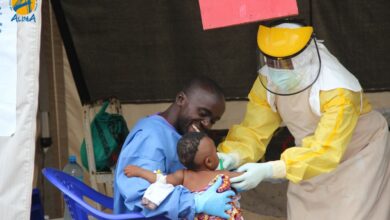
WHO Declares An End To Marburg Virus Disease Epidemic In Equatorial Guinea
The World Health Organization (WHO) on Thursday declared an end to a Marburg virus epidemic in Equatorial Guinea, reported France…
Read More » -
Equatorial Guinea
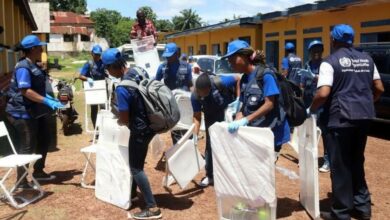
US Health Agency Warns Travellers To Watch Out For Deadly Marburg Virus Symptoms
The United States (US) Centers for Disease Control and Prevention (CDC) on Sunday urged travelers traveling to Guinea and Tanzania…
Read More » -
Equatorial Guinea

Equatorial Guinea’s Health Ministry Confirms 13 Marburg Cases After WHO Comments
Equatorial Guinea’s health officials on Wednesday said the country has reported 13 cases of Marburg virus since the beginning of…
Read More » -
Equatorial Guinea
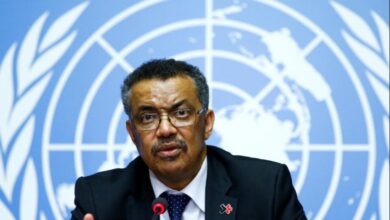
WHO Confirms Eight New Marburg Cases In Equatorial Guinea, Kills 20
The World Health Organization (WHO) on Thursday said eight new Marburg cases have been reported in Equatorial Guinea and the…
Read More » -
Equatorial Guinea
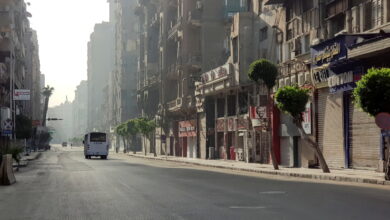
Equatorial Guinea’s Authorities Quarantine Over 200 After Unexplained Deaths
Equatorial Guinea’s Health Minister Mitoha Ondo’o Ayekaba on Friday said more than 200 people have been quarantined after an unknown…
Read More » -
Equatorial Guinea
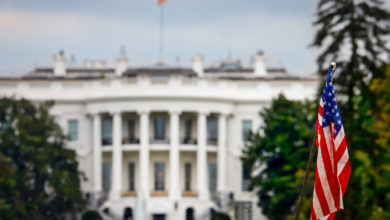
US State Department Expresses Doubts About Equatorial Guinea’s Election Results
The United States (US) on Tuesday expressed serious doubts about the credibility of the recently announced election results in Equatorial…
Read More » -
Equatorial Guinea
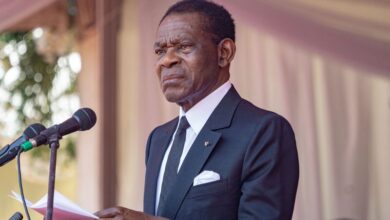
Equatorial Guinea’s Electoral Body Announces President Obiang As Winner
Equatorial Guinea’s authorities on Saturday announced the re-election of President Teodoro Obiang Nguema Mbasogo for a sixth term, reported The…
Read More » -
Equatorial Guinea
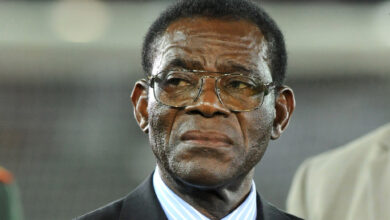
Equatorial Guinea Voters Cast Their Ballots In Presidential & Legislative Elections
Equatorial Guinea held presidential and legislative elections on Sunday to elect its new president and representatives in both parliamentary chambers,…
Read More » -
Equatorial Guinea
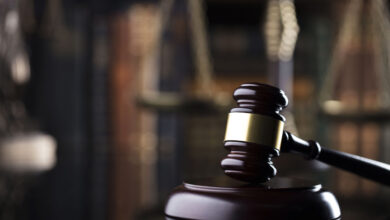
ICJ: Equatorial Guinea Files Case Against France For Misappropriation Of Public Funds
The International Court of Justice (ICJ) on Friday said proceedings have started in a case filed by Equatorial Guinea against…
Read More » -
Equatorial Guinea

Equatorial Guinea’s Longest-Serving President Obiang To Seek New Term In November
Equatorial Guinea’s long-serving President Teodoro Obiang Nguema Mbasogo will seek a new term in November presidential elections, the country’s vice…
Read More » -
Equatorial Guinea

Equatorial Guinea President Mbasogo Signs New Law Abolishing Death Penalty
Equatorial Guinea has abolished the death penalty, state television announced on Monday citing a new law signed by President Teodoro…
Read More » -
Equatorial Guinea

Equatorial Guinea: Prime Minister Francisco Asue And Government Resigns Amid Crisis
The government and prime minister of Equatorial Guinea presented their resignation on Friday to President Teodoro Obiang, who claimed they…
Read More » -
Equatorial Guinea
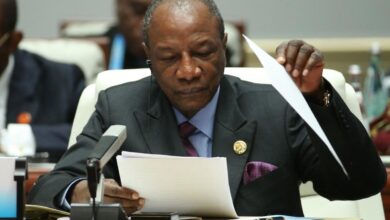
Guinea: President Conde Delays Sunday’s Referendum And Legislative Polls
Guinea’s President Alpha Conde on Friday announced the constitutional referendum and legislative polls which were scheduled to take place on…
Read More »

